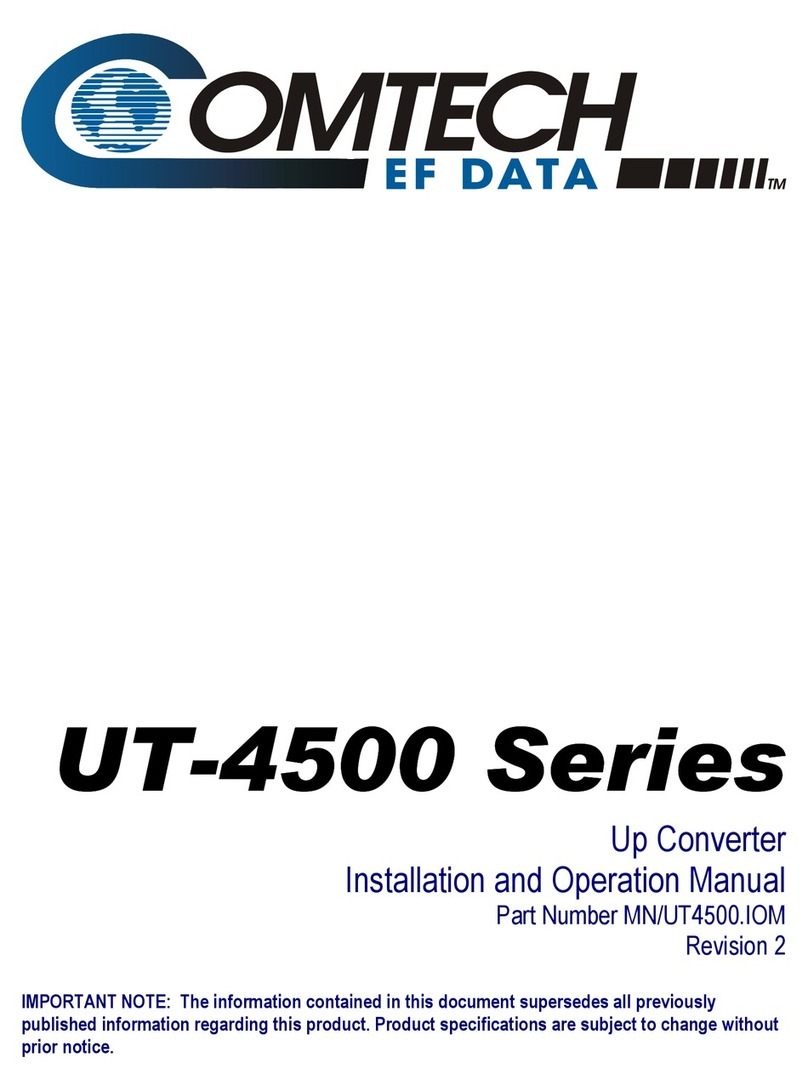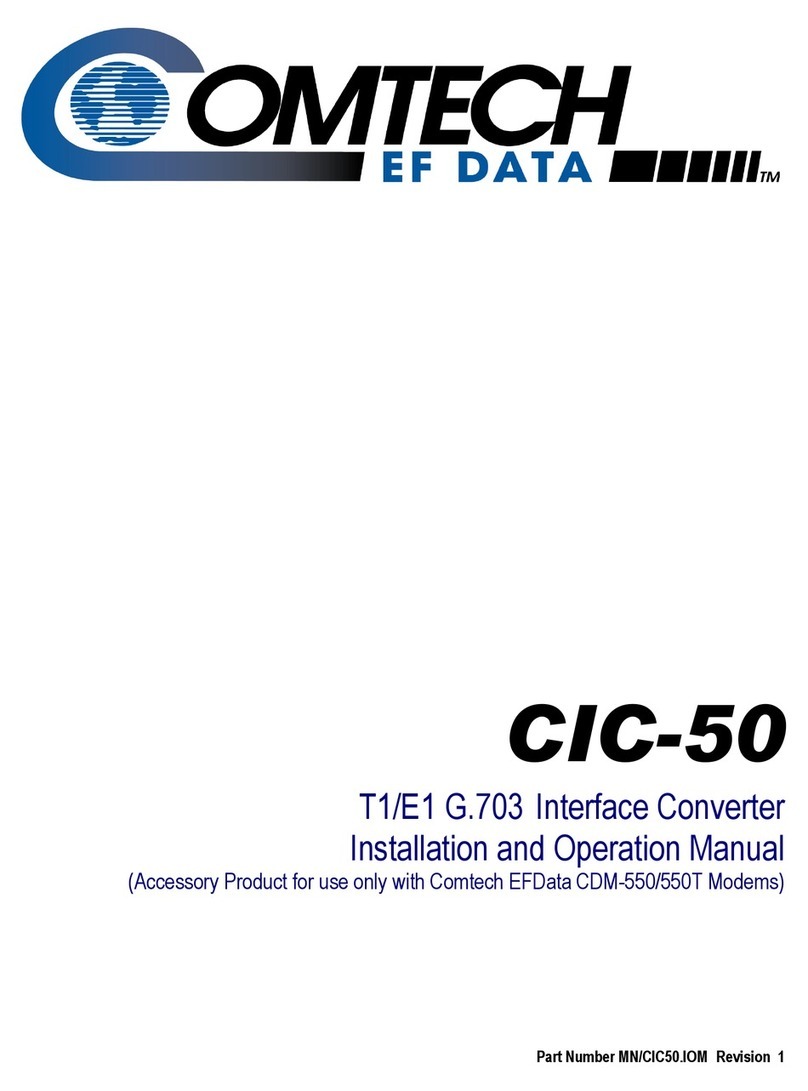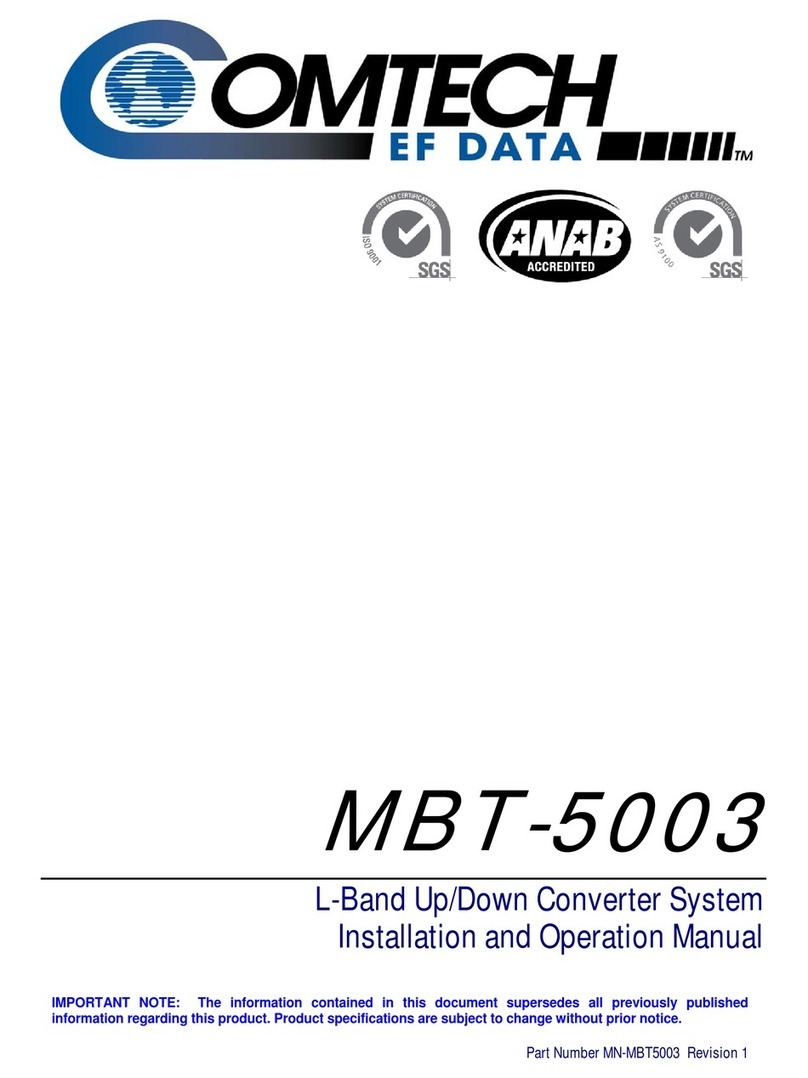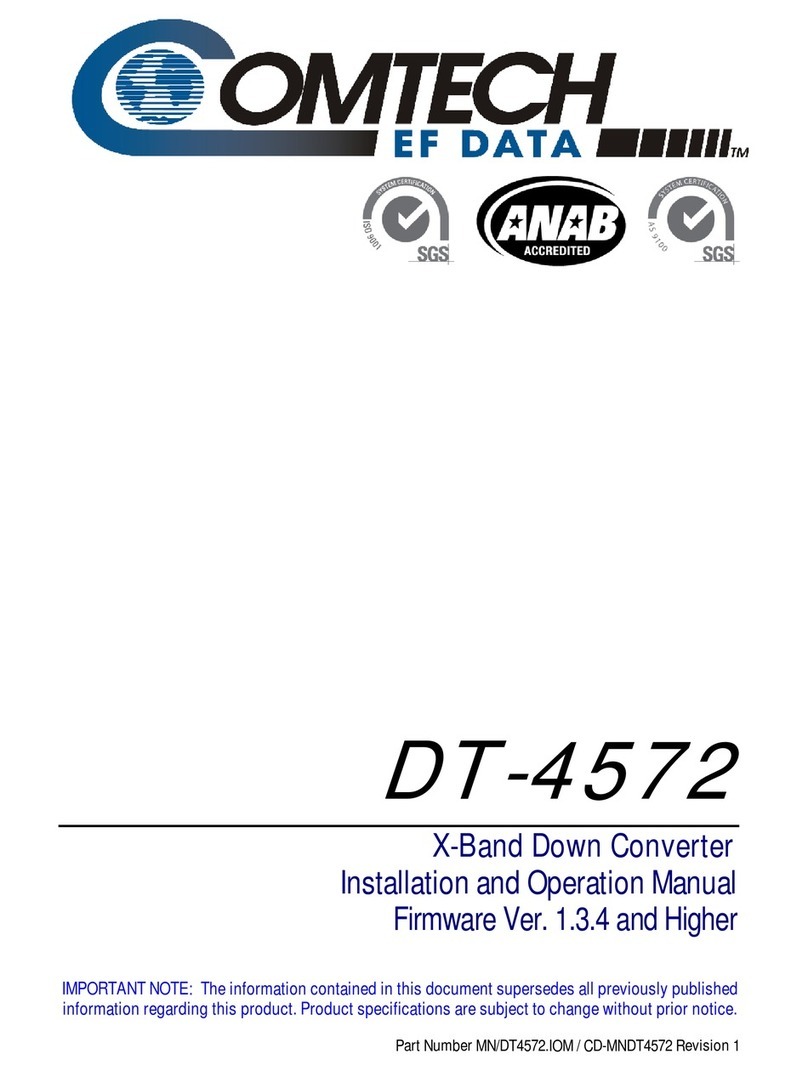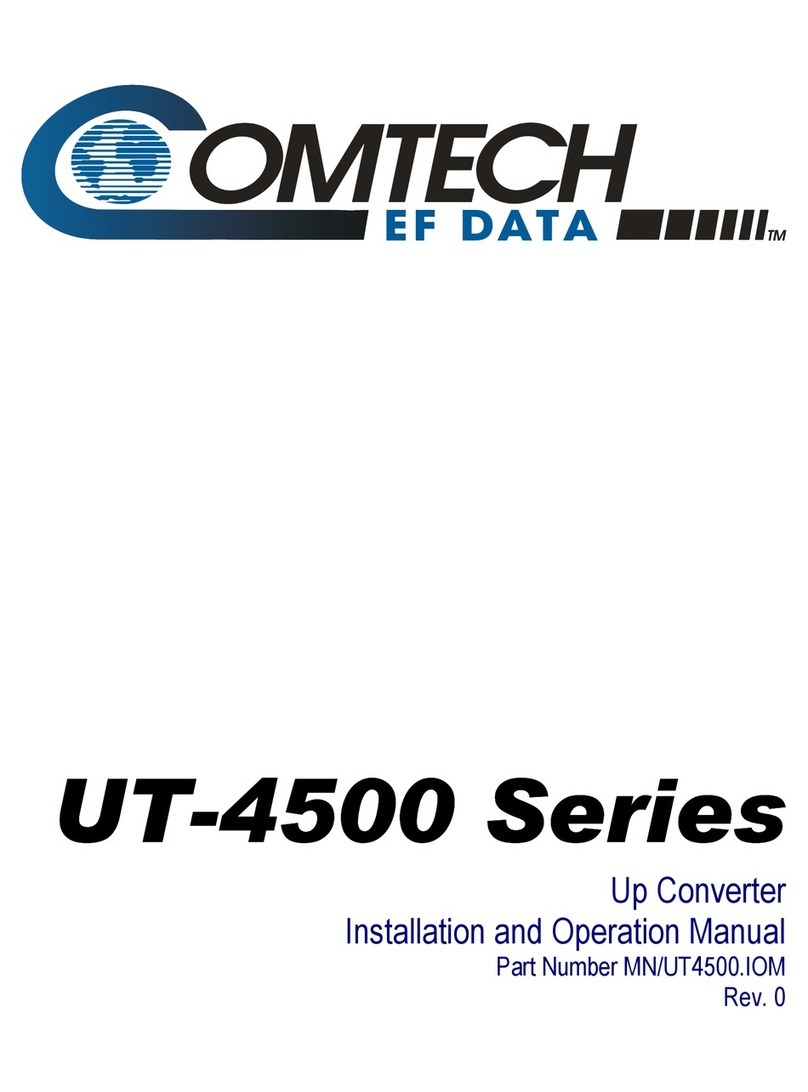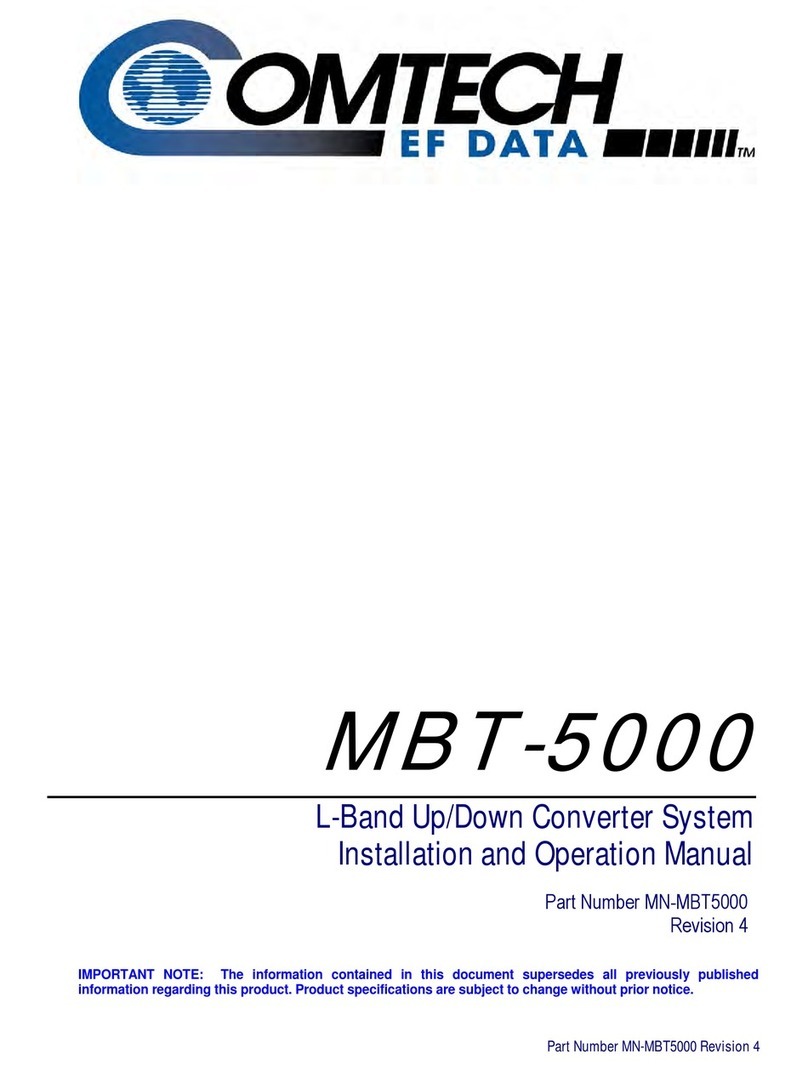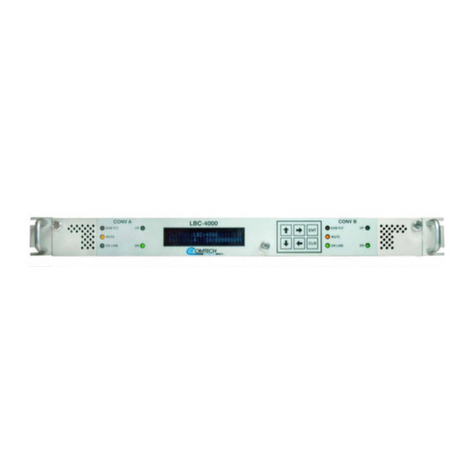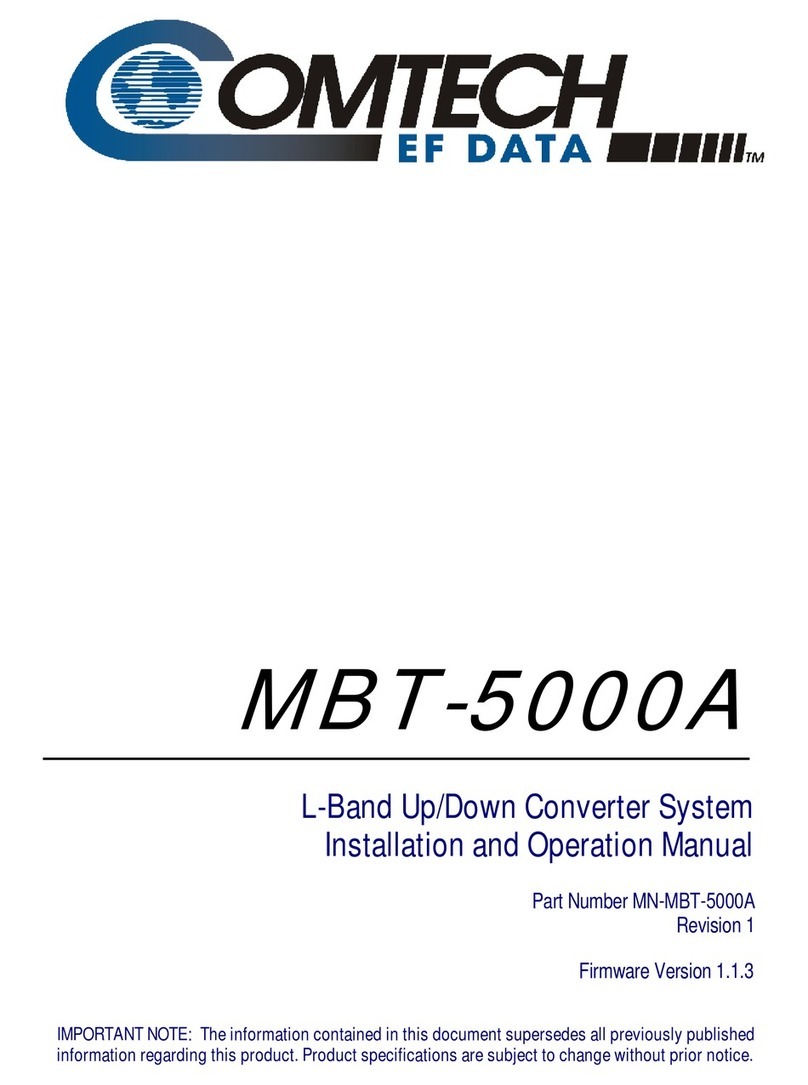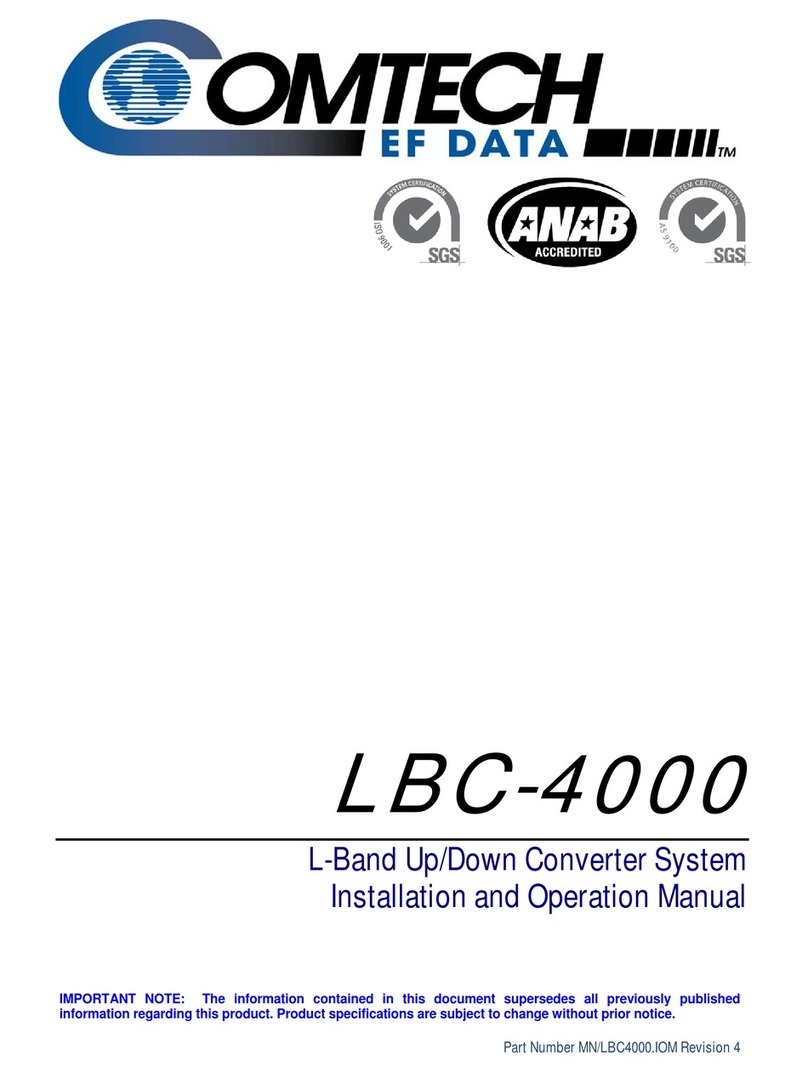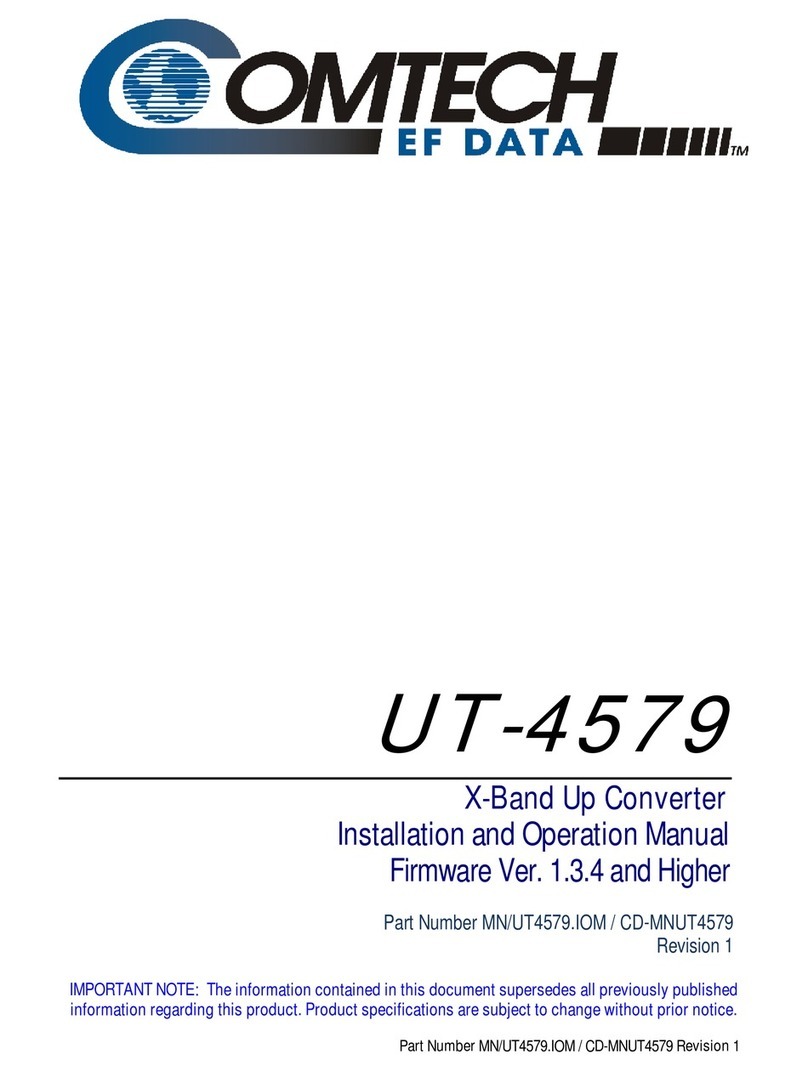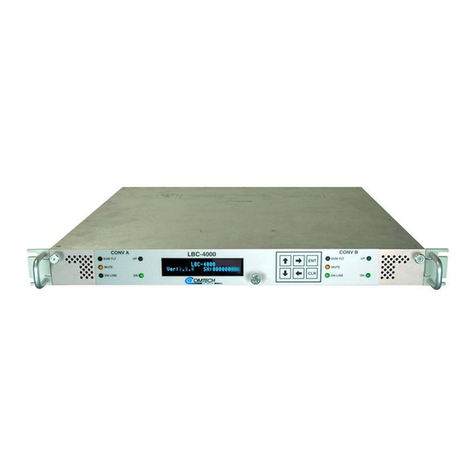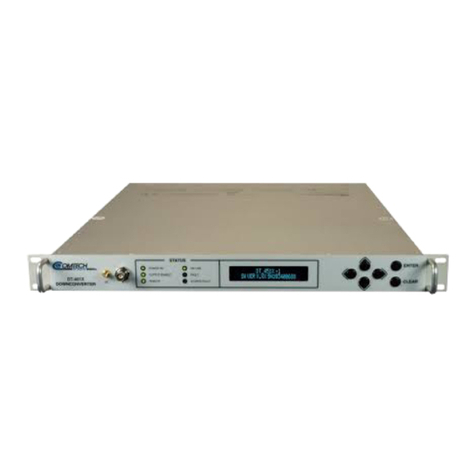
UT-4500 Series C- and Ku-Band Up Converters MN/UT4500.IOM / CD/UT4500.IOM
Table of Contents Revision 3
v
2.1.8.3 Ethernet Connector ...................................................................... 2–4
2.1.8.4 Serial Connectors.......................................................................... 2–4
2.1.8.5 Removable “Personality” Modules .............................................. 2–4
2.1.8.5.1 IOM (Input/Output Module) Assemblies............................... 2–4
2.1.8.5.2 PSM (Polarity Switch Module) Assemblies ............................ 2–5
2.1.8.5.3 TSM (Transmit Switch Module) Assemblies........................... 2–5
2.1.8.5.4 EQM (Equalizer Module) Assemblies ..................................... 2–5
2.1.8.5.5 RSM (Receive Switch Module) Assemblies ............................ 2–6
2.2 Operational Specifications................................................................. 2–6
2.2.1 Available Models / Operating Frequency Ranges................................ 2–6
2.2.1.1 C-Band Units................................................................................. 2–6
2.2.1.2 Ku-Band Units............................................................................... 2–7
2.2.2 Conversion ........................................................................................... 2–7
2.2.3 Frequency Selection Step Size ............................................................. 2–7
2.2.4 Preset Channels.................................................................................... 2–7
2.2.5 Stability Over Time............................................................................... 2–7
2.2.6 Stability Over Temperature .................................................................. 2–7
2.2.7 IF Input ................................................................................................. 2–8
2.2.7.1 Noise Figure.................................................................................. 2–8
2.2.7.2 Level.............................................................................................. 2–8
2.2.7.3 Range ............................................................................................ 2–8
2.2.7.4 Impedance.................................................................................... 2–8
2.2.7.5 Return Loss ................................................................................... 2–8
2.2.8 RF Output............................................................................................. 2–8
2.2.8.1 Output Level ................................................................................. 2–8
2.2.8.2 Intermodulation ........................................................................... 2–8
2.2.8.3 Carrier Mute ................................................................................. 2–9
2.2.8.4 Non-carrier Spurious .................................................................... 2–9
2.2.8.5 Carrier Spurious............................................................................ 2–9
2.2.8.6 AM to PM...................................................................................... 2–9
2.2.8.7 Return Loss ................................................................................... 2–9
2.2.8.8 Impedance.................................................................................... 2–9
2.2.9 Transfer ................................................................................................ 2–9
2.2.9.1 Gain............................................................................................... 2–9
2.2.9.2 Attenuation Adjustment............................................................... 2–9
2.2.9.3 Gain Stability............................................................................... 2–10
2.2.9.4 Ripple.......................................................................................... 2–10
2.2.9.5 Slope ........................................................................................... 2–10
